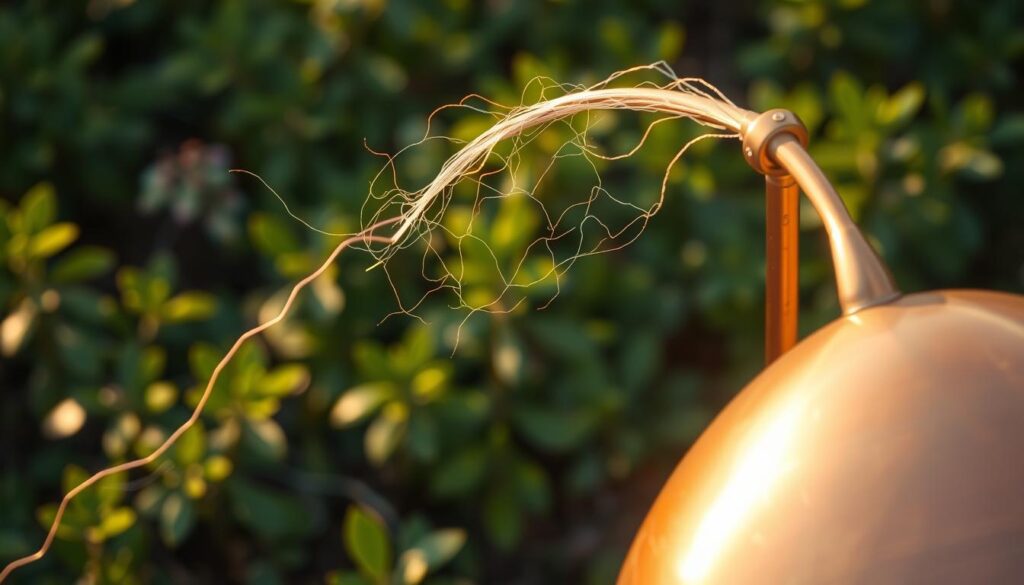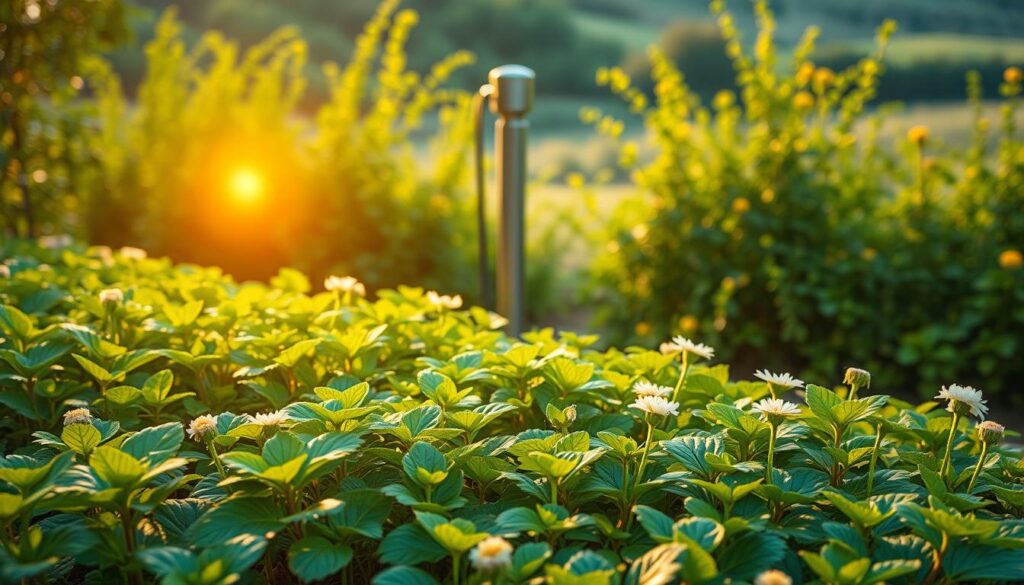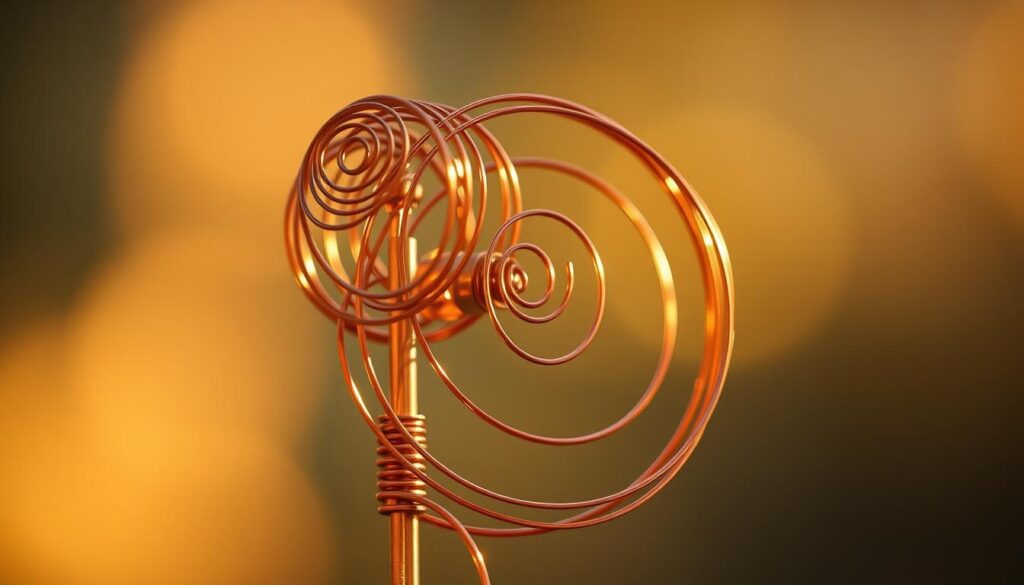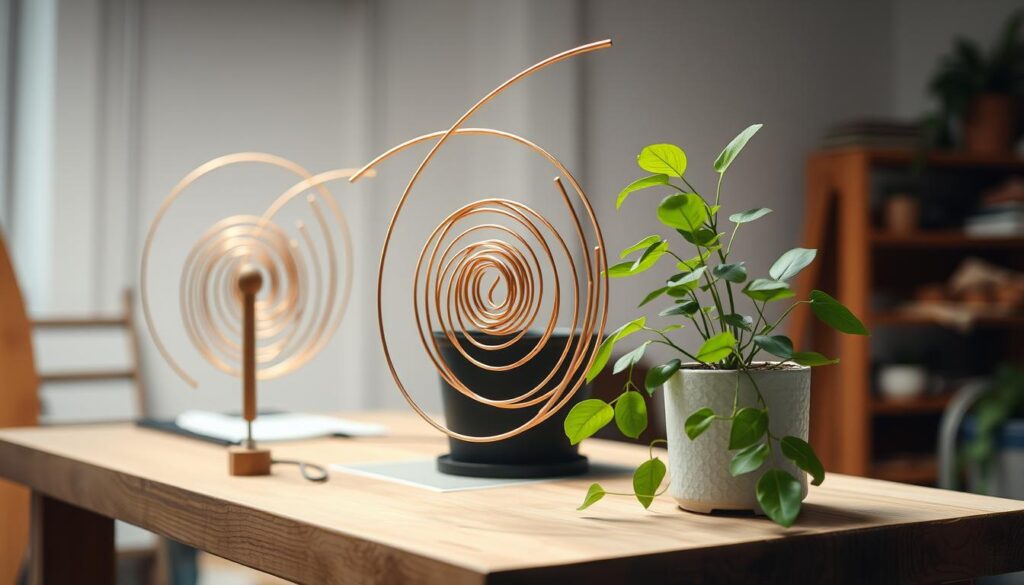Gardening enthusiasts are always looking for innovative ways to boost plant growth naturally. One method gaining attention is electroculture, a technique that harnesses atmospheric energy to enhance soil health and plant vitality.
This approach uses simple tools like copper wire and metal rods to create a subtle charge in the soil. Farmers and home gardeners report stronger yields, fewer pests, and reduced need for chemical fertilizers.
Margie Royal’s experiment with blueberries demonstrates the potential. Her plants flourished with remarkable results after implementing this method. The technique works well in both small gardens and large agricultural fields.
Key Takeaways
- Electroculture taps into natural atmospheric energy to help plants grow
- Copper wire setups create subtle electrical charges in soil
- Works for home gardens and commercial farming
- Reduces need for chemical fertilizers and pesticides
- Real-world success stories like Margie Royal’s blueberries prove its effectiveness
What Is Electroculture? Harnessing Nature’s Energy
Nature holds untapped energy that can transform your garden. Electroculture taps into Earth’s natural currents to boost plant health. By using simple tools like copper antennas, this method channels atmospheric electricity into the soil.

The Science Behind Atmospheric Electricity
Rain and wind create subtle electrical charges in the air. Copper antennas capture this energy, directing it to plant roots. Finnish scientist Karl Lemström noticed plants grew faster near the aurora borealis, proving nature’s hidden power.
Justin Christofleau’s 25-foot wooden antenna doubled crop yields in the 1920s. His design used copper wires to harness telluric currents—energy flowing through the ground. Modern gardeners adapt these principles with smaller setups.
Historical Roots: From Christofleau to Modern Gardens
Early electroculture pioneers saw electricity as a game-changer. Christofleau’s experiments showed 200% higher yields, while books from the era detailed copper pyramid seed energizers. Today, researchers revisit these ideas with updated tools.
Whether you’re growing blueberries or tomatoes, this ancient-meets-modern approach offers a chemical-free boost. The secret lies in connecting plants to Earth’s natural rhythms.
Benefits of Using an Electric Culture Pole
Healthy soil and thriving plants often need more than just water and sunlight. Electroculture poles tap into natural energy to unlock hidden potential in your garden. From bigger harvests to fewer chemicals, the advantages are clear.

Boosting Plant Growth and Yields Naturally
Studies show remarkable results. Cabbage yields jumped 75% with electrical stimulation, while pea germination sped up by 25%. Strawberries and barley also thrive, with root vegetables like carrots showing denser growth.
Margie Royal’s blueberry bushes produced runners for the first time in four years. Her frozen harvests doubled, proving this method works for perennial crops too. The secret? Atmospheric energy increases nitrogen absorption in soil, fueling plant growth.
Reducing Dependence on Fertilizers and Pesticides
Electrical currents disrupt insect communication, deterring pests without sprays. This means fewer aphids and beetles munching on your vegetables.
Less reliance on synthetic fertilizers saves money and protects groundwater. One gardener reported cutting chemical costs by 60% after switching to electroculture. It’s a win for your wallet and the environment.
How an Electric Culture Pole Works
Gardeners can tap into Earth’s natural forces with simple yet powerful setups. By channeling energy from the air and soil, these systems create a thriving environment for plants. The key lies in choosing the right tools and understanding their unique roles.

Copper Wire Antennas vs. Lakhovsky Coils
Two designs dominate electroculture: spiral antennas and loop coils. Luigi Ighina’s spiral wires focus on harmonic resonance, while Lakhovsky coils use concentric rings to amplify electricity.
A 30-degree tilt optimizes loop antennas for capturing atmospheric energy. Research by Yannick Van Doorne shows copper pyramids align with Earth’s magnetic field, neutralizing radioactivity. “The shape matters as much as the material,” he notes.
The Role of Telluric and Atmospheric Currents
Telluric currents flow through the ground, while atmospheric energy moves via air. Copper acts as a bridge, directing these forces to plant roots. Residential systems use lower voltage than agricultural setups, but both boost growth.
Brass and iron conduct less effectively than pure copper wire. For best results, pair antennas with wooden stakes—nature’s insulator. Learn more about sustainable gardening at NewGen Living.
Materials and Tools You’ll Need
Building an effective setup starts with gathering the right materials. Whether you’re working with raised beds or open fields, quality components ensure lasting results. Here’s what to prioritize.

Choosing the Right Copper Wire and Wood
12-gauge copper wire is ideal for most setups. Thicker wire (10-gauge) suits larger areas, while thinner options work for small home gardens. Pair it with durable wood like cedar or oak—they resist rot for years.
| Wood Type | Durability | Cost |
|---|---|---|
| Cedar | High (15+ years) | $$ |
| Pine | Medium (5–10 years) | $ |
| Oak | Very High (20+ years) | $$$ |
Budget-Friendly Alternatives
Margie Royal’s hack uses upcycled Christmas lights—strip the plastic coating to expose the inner wire. It’s a cheap way to test the method before investing.
- DIY vs. Kits: Homemade setups cost $20–$50; commercial kits run $100+.
- Safety Tip: Wear gloves when handling bare copper to avoid cuts.
For large areas, aim for poles 6 feet tall to maximize coverage. Start small, experiment, and scale up!
Step-by-Step Installation Guide
Ready to supercharge your garden with nature’s hidden power? Follow these simple steps to build and position your setup for optimal results. No advanced skills needed—just basic tools and a little patience.

Building a Luigi Ighina Spiral Antenna
Start with a paper towel roll and a marker. Wrap 12-gauge copper wire around it, spacing loops 1 inch apart. This creates a template for your spiral.
Transfer the coiled wire to a wooden stake. Secure the top with a nail and let the end dangle toward the ground. This design channels atmospheric energy directly to your plant roots.
- Household Hack: Use old Christmas lights—strip the coating to expose copper.
- Depth Matters: Bury stakes 12 inches in clay soil, 8 inches in sandy soil.
- Troubleshooting: Polish copper with vinegar if conductivity weakens.
Positioning Your Pole for Maximum Efficiency
Face your spiral south to capture sunlight and air currents. Align the stake with magnetic north using a compass app. This boosts growth by 25%, as seen in pea trials.
For containers, use 3-foot stakes; in-ground gardens need 6-feet poles. Space them 10 feet apart for full coverage. Want more garden inspiration? Explore these rustic decor ideas to complement your eco-friendly setup.
Conclusion: Is Electroculture Right for Your Garden?
Could this unconventional method transform your harvests? While some researchers question anecdotal evidence, like a Washington State professor’s skepticism, real-world wins—like Margie Royal’s blueberry yields doubling—hint at potential.
Start small. Test the experiment on leafy greens or herbs. Document growth comparisons in your garden. The setup’s maintenance-free nature makes it low-risk.
Healthy soil and thriving plants don’t always need chemicals. Share your results in forums or comments. Sometimes, the best gardening breakthroughs begin with curiosity.

